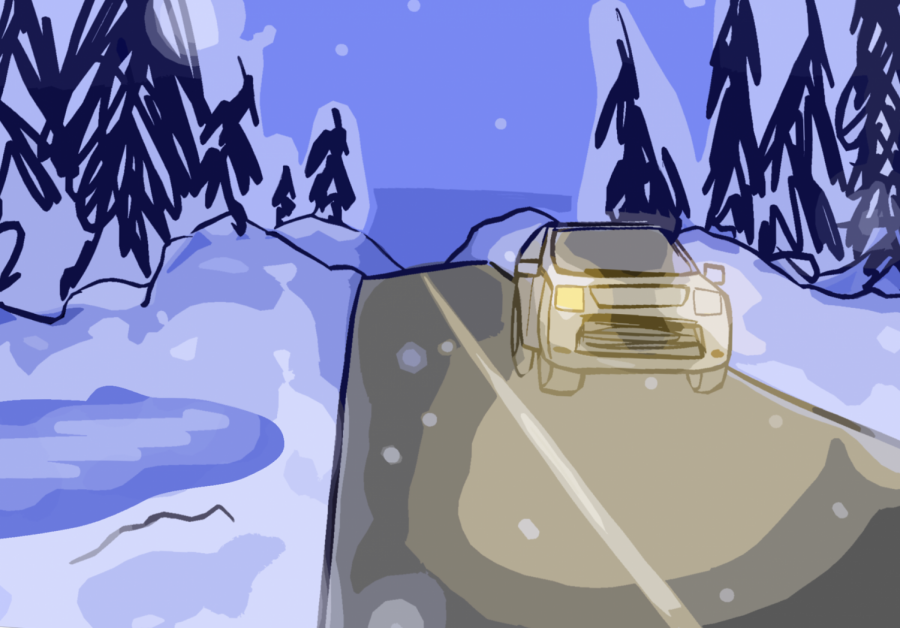De-icing technology is ‘snow’ mistake
Road salt contaminates ground water, corrodes vehicles, concrete
The de-icing technology will reduce harm to the environment.
November 4, 2021
WSU made a commercial licensing deal with Massachusetts-based Fusione Corp. to manufacture environmentally-responsible de-icing technology. The collaboration aims to provide a sustainable de-icer that will recycle agricultural waste and reduce harm to the environment.
The liquid de-icing technology uses locally-available agricultural waste like grapes and apples. It is broken down into green chemicals, which slows the corrosivity of road salt used to treat icy roads, said lead researcher Xianming Shi, interim chair of the Department of Civil and Environmental Engineering and director of the National Center for Transportation Infrastructure Durability and Life-Extension.
While this technology will not replace road salt, it will cut down on its usage. The outcome is to maintain the efficacy of using only road salt despite using less of it, Shi said.
“America’s slowly getting addicted to road salt because it’s so convenient,” he said. “We can drive fast during the winter. Now, we no longer rely on chain control, or we no longer need to learn how to drive on icy roads.”
But this current practice is not sustainable, Shi said. Road salt usage has been increasing over the past several decades. Not only is it corrosive to vehicles and concrete, but it contaminates groundwater, which is the source of drinking water.
“Once you exceed 250 milligrams per liter, it’s no longer suitable for humans to drink that water without treatment,” he said. “Give it another 50 years, our grandchildren could be drinking salty water because all the groundwater was contaminated with salt just because we want this convenience right now.”
The high concentration of road salt in water can also affect sea life, like fish and frogs, Shi said.
This new technology is an evolution of the organic de-icers already on the market. There are de-icing products like sugar beet, corn and soybean, but they are mainly manufactured in the Midwest. The new technology will bring the solution to a regional level, said Marc Valenti, principal of Fusione Corp.
The company is looking at the logistics of manufacturing the product.
“You do have to figure out if it’s something that’s commercially viable to manufacture,” Valenti said. “Simply because if you want to make it on a mass level, then you need to make sure that you can actually afford to make it.”
The company is looking to do field trials of the de-icer early to mid-January next year. Ten different agencies throughout the country will be given a sample of the product to test out.
“We’re trying to strategically place [samples] in different parts of the country, as well to try and balance what different geographical areas are, what their needs could be and how the performance is overall,” he said. “We’re not just trying to pull the cream off the top and sensationalize the data. We actually want to read their data to make sure that it’s consistent.”
First, the company will work on a wholesale level with manufacturers and salt suppliers. But they also want consumers across the country to be able to purchase the de-icer from a retail store for personal use, he said.
WSU owns the intellectual property of the de-icer, but the product needs to be licensed to a company in order for it to be manufactured, Shi said.
Fusione Corp. was chosen as a partner because of the company’s expertise in snow and ice operations in the Northeast. It is ideal to test the technology there because their weather conditions are similar to the Northwest, said Rabindra Nanda, technology licensing associate for WSU’s Office of Commercialization.
It was important to find the right home for the technology, Nanda said.
“It’s not always just about finding the largest company out there,” he said. “It’s more in terms of what’s the best way and biggest impact for that technology.”










